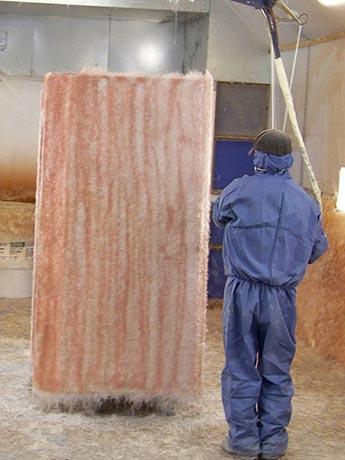Fiberglass parts start from a mold that is a negative of the final part. First the mold is treated with a release agent. The release agent will allow the mold to be separated from the plug once it is finished. The mold release agent is a special wax, and/or PVA (Polyvinyl Alcohol).
Once the mold has its release agent applied, gelcoat is applied with a specially-designed spray gun. The gelcoat is pigmented resin, and gives the mold surface a harder, more durable finish. It also is the cosmetic, outward facing part of most parts and gives the part its color.
Next the fiberglass is applied over the gelcoat. This can be done through a couple of different ways. Which process, or if both processes are used is dependent on the requirements of the part.
Hand lay is a type of fiberglass fabrication where fiberglass and any core materials are positioned by hand to an open mold. The resin is applied using brushes, rollers or poured on. This process is mainly used in lower volume production, or when extra strength to an area is required.
Spray up is an open molding process in which multi-end fiberglass roving is fed into a chopping gun which chops the fiberglass into batches at a preset length. The batches of fiberglass are then sprayed into a stream of resin and catalyst (which also comes from the gun) and shot onto the open mold. The spray-up process is typically used to make larger parts.
Regardless of how the glass is applied, air bubbles must be removed from the glass and from between the glass and gelcoat. This is done by stippling the part with a brush on smaller hand lay parts or with a special roller that had “pins” on it to work the air out.
Once the final layers of fiberglass are applied to the mould, the resin is allowed to set-up and cure. Plastic wedges are then driven between the plug and the mold, and air is used to help separate the two.
Once the part is removed from the mold the edges are ground smooth, and the part is polished. At this point any small imperfections can also be repaired.






